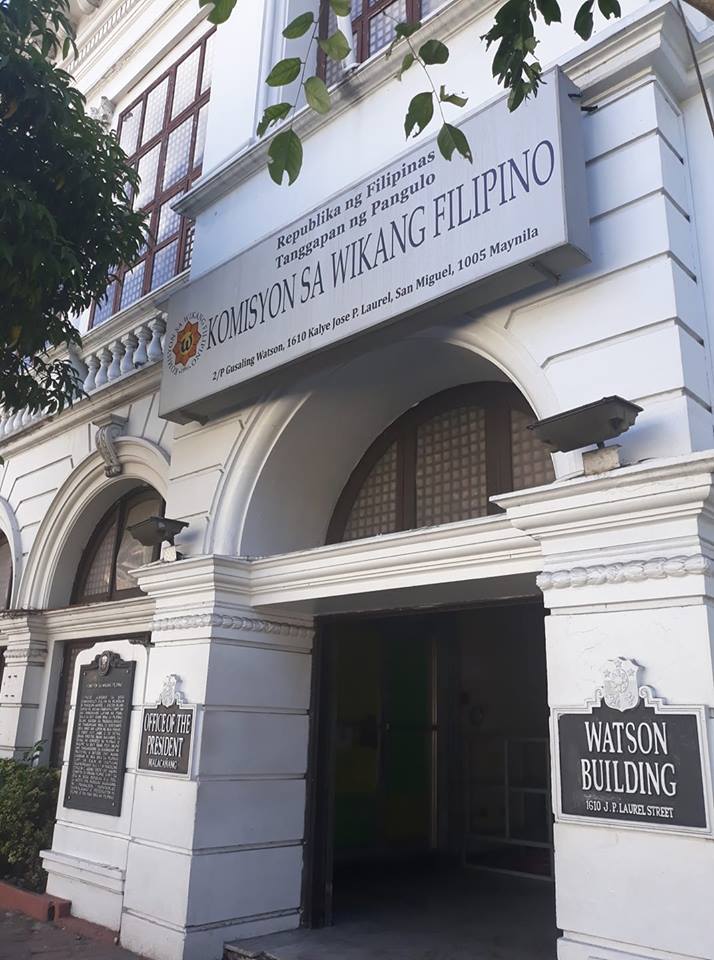
MANILA – The Komisyon sa Wikang Filipino (KWF) will install and unveil this year more Bantayog-Wika or language monuments around the country.
The target locations for such monuments are Camarines Sur, Cagayan, La Union, North Cotabato and Aurora provinces, as well as Bacolod City, according to John Lerry Dungca, the agency’s translator and Bantayog-Wika project coordinator.
He said the monuments will represent the Rinkonada, Ibanag, Hiligaynon, Ilokano, Magindanawon and Alpa indigenous languages of indigenous communities in said areas.
“We continue to coordinate with LGUs concerned regarding installation of Bantayog-Wika monuments in the target locations,” he said.
The KWF’s Bantayog-Wika project aims to further help raise knowledge and awareness about as well as promote continuous use of indigenous Philippine languages to prevent these from becoming extinct.
Languages become extinct if no longer spoken, the KWF warned.
The KWF targets installing and unveiling Bantayog-Wika monuments for each of the country’s 130 indigenous languages.
About 39 of such languages are already endangered, said the KWF.
Dungca said this year, the KWF has so far installed and unveiled a Bantayog-Wika monument in General Santos City, Batanes province and Lake Sebu.
Bantayog-Wika monuments there represent the Blaan, Ivatan and Tiboli languages, respectively.
Location of other existing Bantayog-Wika monuments are in Antique (Kinaray-a), Ifugao (Tuwali), Mati City (Mandaya), Kalinga (Kalinga), Occidental Mindoro (Mangyan), Bukidnon (Binukid), Batangas (Tagalog Batangas), Bataan (Ayta Magbukon), Surigao del Sur (Surigawnon), Baguio (Ibaloy), Sorsogon (Bikol Sorsogon) and Pangasinan (Pangasinan).
“LGUs can contact us if they’re interested in having Bantayog-Wika monuments for indigenous languages in their areas,” said Dungca.
He said under the standard KWF-LGU Bantayog-Wika agreement, the agency provides the monument while the local government provides the site for the structure.
The local government also builds the monument’s pedestal bearing information about the language the structure represents.
“We’re hoping to partner with more LGUs on installing Bantayog-Wika monuments,” he said.
At last month’s 2019 Buwan ng Wika launch in Manila, KWF Chairperson Virgilio Almario said indigenous languages are part of Philippine cultural heritage and articulate the country’s history and rich indigenous knowledge.
The country will permanently lose part of its heritage if such languages become extinct, he noted.
‘Wikang Katutubo: Tungo sa Isang Bansang Filipino’ is the 2019 Buwan ng Wika theme, highlighting indigenous languages’ importance in helping mold the country’s past, present and future.
Proclamation 1041 series of 1997 proclaimed August of every year as Buwan ng Wikang Pambansa.
Buwan ng Wika highlights importance Philippine languages in promoting communication, understanding, unity and progress in the country.
The KWF said installation artist Luis ‘Junyee’ Yee, Jr. prepared the Bantayog-Wika monument design.
It added that the Baybayin letters carved into the monument’s body form several lines from Philippine hero Andres Bonifacio’s poem “Pag-ibig sa Tinubuang Bayan”.
Bantayog-Wika monuments are lighted from within so people can read those lines at night.